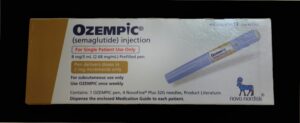Gio’s Law: Enhancing Public Safety through Epinephrine AccessH.R. 4019 IH – 119th Congress
Introduced in the House of Representatives on June 17, 2025.
SECTION 1. SHORT TITLE
This Act may be cited as ‘‘Gio’s Law’’.
SECTION 2. LAW ENFORCEMENT ACCESS TO EMERGENCY EPINEPHRINE GRANT PROGRAM
Title I of the Omnibus Crime Control and Safe Streets Act of 1968 (34 U.S.C. 10101 et seq.) is amended by adding at the end the following:
- ‘‘PART PP—LAW ENFORCEMENT ACCESS TO EMERGENCY EPINEPHRINE GRANT PROGRAM’’
- ‘‘SEC. 3061. GRANT AUTHORIZATION’’
- ‘‘The Attorney General is authorized to make grants under this part to States and units of local government to—’’
- ‘‘(1) purchase epinephrine products for use by State, local, and tribal law enforcement agencies,’’
- ‘‘(2) train State, local, and tribal law enforcement officers, in accordance with the curricula developed or identified under section 3062’’
- ‘‘(1) recognize the symptoms of an anaphylactic reaction,’’
- ‘‘(2) correctly administer epinephrine products to any individual reasonably believed to be having an anaphylactic reaction’’
- ‘‘(1) an epinephrine auto-injector,’’
- ‘‘(2) a product that facilitates the administration of epinephrine other than by injection’’
- ‘‘(1) the symptoms of an anaphylactic reaction,’’
- ‘‘(2) the role of law enforcement officers and first responders in administering epinephrine products’’
SEC. 3062. STANDARDIZED TRAINING
Not later than 180 days after the date of enactment of this part, the Attorney General shall develop a training curriculum, or identify effective existing training curricula, to train law enforcement officers to—’’
SEC. 3063. APPLICATION
The chief executive of a State or unit of local government seeking a grant under this part shall submit to the Attorney General an application at such time, in such manner, and containing such information as the Attorney General may reasonably require, including a certification of the State attorney general of the State, or the State in which the unit of local government is located, that a law enforcement officer who is authorized in that jurisdiction to administer epinephrine products to any individual reasonably believed to be having an anaphylactic reaction is protected from civil liability arising from administering such a product.’
SEC. 3064. DEFINITION
In this part, the term ‘‘epinephrine product’’ means—’’
SEC. 3065. AUTHORIZATION OF APPROPRIATIONS
There is authorized to be appropriated $25,000,000 to carry out this part for each of fiscal years 2026 through 2030.’’
SECTION 3. REPORT ON ADMINISTRATION OF EPINEPHRINE BY LAW ENFORCEMENT OFFICERS
On an annual basis, the Attorney General, acting through the Director of the Bureau of Justice Statistics, shall submit to Congress and make publicly available, data on the frequency of the administration of epinephrine products (as such term is defined in section 3064 of title I of the Omnibus Crime Control and Safe Streets Act of 1968) by Federal, State, local, and tribal law enforcement officers.
SECTION 4. INTERAGENCY PUBLIC AWARENESS AND OUTREACH CAMPAIGN
Not later than 180 days after the date of enactment of this Act, the Attorney General, in collaboration with the Secretary of Health and Human Services, shall design and implement a public awareness campaign to educate members of the public about—’’



